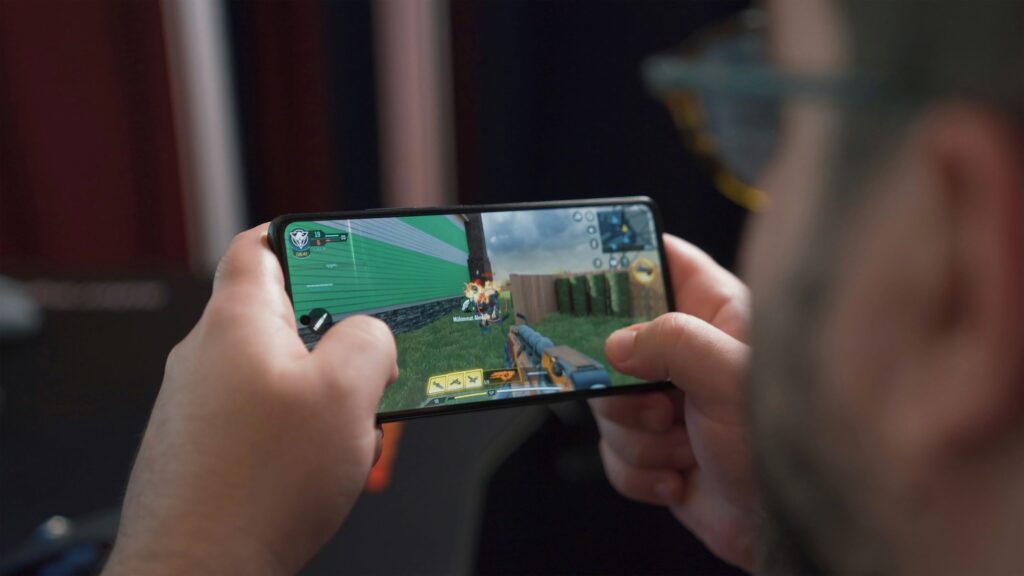Key takeaways
- To become a game designer, you need a blend of creativity, technical skills, and strong storytelling abilities.
- Game designer jobs require skills like level design, world-building, character development, gameplay mechanics, and making user interface design.
- Game design encompasses various specialized roles such as level design, world design, content design, system design, and UI design.
- A bachelor’s degree in game design is the ideal starting point, but certifications in Unity can further enhance skills.
- Practical experience and a strong portfolio are crucial for landing game design jobs.
- The gaming industry is growing rapidly, offering promising career opportunities for skilled game designers.
Game design is a versatile field, spanning genres from sports and fantasy to educational tools. It offers a diverse range of experiences, from casual puzzle games to immersive role-playing adventures. Games can be designed for single-player immersion or multiplayer collaboration, catering to casual and hardcore gamers alike.
Here, we discuss what skills you need to become one and provide an in-depth guide on how to become a game designer, including required skills, experience, certifications, and ideal qualifications for a game designer.
What does a video game designer do?

The role and responsibilities of a video game designer are extensive and complex. Game designers collaborate with teams to bring games to life, often specializing in areas like level design or art direction. They define the foundational elements of the gaming world they are creating. These include the creation of the narrative, characters, rules, and audiovisual elements, all of which combine to provide the ultimate user experience.
Game designers work within a game development team, often focusing on aspects of design and art direction. They work closely with programmers and artists, to ensure a seamless player experience, identifying and fixing issues through rigorous testing.
Responsibilities of a video game designer
Here are some common roles and responsibilities of a game designer:
- Envisioning the game’s core ideas, including its genre, setting, and target audience.
- Creating the game’s levels, puzzles, and challenges.
- Developing the game’s characters, both visually and in terms of their personalities and motivations.
- Designing the rules and systems that govern gameplay, such as combat, movement, and inventory management.
- Fine-tuning the game’s difficulty and progression to ensure a satisfying player experience.
- Collaborating with UX designers to create intuitive and enjoyable user interfaces.
- Managing and motivating the game development team.
- Developing a detailed plan for the game’s development, including milestones and deadlines.
It is important to note that there are different game design elements that different individuals in a team work on. Responsibilities are generally divided by stages of the game design process and employee seniority level within the team.
Specialized job roles within game design
Some employers hire game designers based on their specialization within the game design process which are as follows.
Level design
The level design stage involves creating the game’s stages, maps, and missions. Moreover, level designers are often required to keep players engaged and entertained by constructing interactive challenges and events within the game world.
World design
World design involves crafting the game’s setting, theme, and backstory, shaping its overall direction. It’s a blend of art and science, aiming to create a detailed, engaging, and consistent environment for players to explore.
System design
Video game systems design involves crafting the underlying mechanics that players interact with but don’t directly control. It encompasses a wide range of elements, from core gameplay mechanics to progression systems and even camera controls. These designers work behind the scenes to ensure a consistent and enjoyable player experience, making them essential to any game development team.
User interface design
UI design in video games involves crafting visual cues to guide players through the game world. A well-designed UI enhances immersion and player engagement. UI designers ensure the interface integrates with the gameplay, has plenty of visual cues, and uses human psychology and human behavior to increase player satisfaction.
Platform specialization
Platform specialization in game design involves focusing on a specific gaming platform like PlayStation, Xbox, Nintendo Switch, or PC. Designers who specialize in a particular platform gain a deep understanding of its unique hardware capabilities, software development kits (SDKs), and user interface guidelines.
How to become a game designer?

The best way forward in the world of game design is with the right educational qualifications, skills, and portfolio. The earlier you start preparing for a career in game design, the better. Here is a step-by-step guide on how to become a game designer.
Step 1: Choose high school courses that build a foundation in game design
At the high school level, the following elective courses can prepare you for a career in game design:
- Art
- Computer programming
- Graphic design
- Creative writing
- Painting
Additionally, taking as many English courses as possible is ideal as writing is an essential part of game design. Aspiring self-employed game designers will benefit from courses such as:
- Entrepreneurship
- Accounting
- Business
Step 2: Consult a teacher or a career counselor at your high school for the best way forward
Seek advice and aid from a teacher with qualifications, an interest, or experience in the field of game design. They may be able to share insights or provide guidance as to where you can gain real-world experience from.
You should also consult your career counselor and specifically ask for work-based learning opportunities. These can include internships, field visits to game development companies, and volunteer opportunities on game development projects.
Teachers and career counselors can also direct you to relevant school groups such as:
- Newspaper, yearbooks, and magazines – Hone your writing and graphic design skills
- Computer club – Gain hands-on experience and build your portfolio by joining the computer club. You’ll learn programming, game development, and digital design, and apply your skills to real-world projects. Collaborate with like-minded peers and learn from experienced mentors.
Step 3: Pursue a degree that leads to a career in video game design
College-level education is ideal for aspiring video game designers as it provides students with avenues for interaction with industry leaders. There are several degrees you can pursue for a career in game design that you can pursue. These include:
- Bachelor’s degree in game design
- Graphic design
- Computer animation
- Computer engineering
- Software engineering
- Computer programming/ computer science
- Cybersecurity
A bachelor’s degree in game art and design is the ideal way forward for those interested in the creative aspect of game development. You can either pursue a traditional or an online game design degree. Here is what a typical curriculum of a game art and design degree can look like:
Core design courses
- Game Design Fundamentals
- Game Theory
- Game Narrative and Storytelling
- Level Design
- Game Prototyping
- Game Production
Technical courses
- Programming – with languages like C++, Python, and more.
- Game Engines like Unreal Engine or Unity
- 3D Modeling and Animation
- Game Art and Visual Design
- Sound Design and Music Production
Additional general or elective courses
- User Experience (UX) Design
- Game History and Culture
- Game Business and Marketing
- Game Testing
- Quality Assurance
Students must complete an internship and a capstone project as part of their degree requirements, besides the 120-credit hour graduation requirement. However, these requirements can surely vary from college to college. Game design degrees typically offer project-based learning. This ensures the development of a comprehensive set of skills essential for video game designers.
A graphic design or a computer animation degree are great alternate options for those interested in designing video games. For those with a primary interest in game development and its technical aspects, a computer or software engineering degree might be a better option.
Step 4: Develop important skills for a video game designer
Video game designers need a variety of hard and soft skills, including:
- Creative skills to design unique storylines and mechanics that stand out from the competition
- Technical skills such as digital drawing and photography, computer graphics, animations, and more.
- Programming skills including proficiency in multiple programming languages and knowledge of programming principles.
- Knowledge of software and hardware development.
- Storytelling skills are also essential as the concept of a video game is essentially a story.
- Collaboration and the ability to work in a team setting as an entire team of game designers and developers work on each project.
- Communication skills to be able to collaborate with team members, as well as understand and implement feedback.
Step 5: Build your portfolio
Building a strong portfolio is an essential part of preparing to be a video game designer. To build a portfolio:
- Join student clubs such as computer or gaming clubs.
- Apply for internships or part-time positions at game development companies.
- Create games – even if they aren’t particularly unique, create them to practice the skills you should develop.
- Write code snippets – If you have an idea for improving an existing game, write code snippets for improvement and reach out to the game developers. Even if they aren’t interested, you demonstrated vision, and coding skills, making the snippet an excellent addition to the portfolio.
- Design characters – Draw or create digital designs whenever inspiration strikes.
- Join Bootcamps – Bootcamps such as the Creative Alliance’s Video Game Development Skills Bootcamp, or the Game Design Bootcamp are immersive learning bootcamps, where students work on projects to develop essential skills and familiarize themselves with the roles and responsibilities of game designers.
- Participate in competitions – Game jams and similar competitions bring together game design and development enthusiasts, giving them a chance to create a unique game together or as individual participants. Participation alone will provide exposure, experience of the creative process behind game development, and a final product to add to your portfolio.
Being actively engaged in game design and development is essential to becoming a videogame designer. If you don’t have a strong enough portfolio, you may not qualify for game designer positions or may not be able to obtain high-paying roles.
Step 6: Join professional organizations to get opportunities
The following organizations provide access to industry knowledge and insights:
- The International Game Developers Association
- American Institute of Graphic Arts
- Graphic Artists Guild
- Entertainment Software Association
- ACMSIGGRAPH
The stronger and better connected your professional circle is, the more opportunities you will get access to.
Step 7: Consider further education
This can come in the form of a master’s degree in game design, or project management, in the form of additional certifications.
Master’s degree in game design
A master’s degree in game design can significantly accelerate your career trajectory. It equips you with advanced knowledge and skills to lead teams, innovate game concepts, and tackle complex technical challenges. With a master’s, you can aspire to senior roles, such as game director, lead designer, or technical director.
Unity Certified Associate Game Developer
The Unity Certified Associate Game Developer certification validates a game developer’s proficiency in Unity, covering areas such as animation, audio, programming, and game art. To qualify, candidates must have prior experience with C# in Unity.
Unity Certified Associate Programmer
The Associate Programmer certification validates a video game programmer’s ability in programming, asset management, and debugging within the Unity environment. Candidates typically require 2-3 semesters of post-secondary Unity coursework or equivalent self-study experience. They should be proficient in deploying basic builds and understanding existing code.
Pro Tools User Certification – Avid
Avid Education provides a range of Pro Tools certifications for students and industry experts. The Avid Certified User certification validates your basic skills in recording, editing, mixing, and outputting audio projects in Pro Tools.
Unity Certified Associate Artist
The Associate Artist certification exam assesses skills in asset management, scene design, and the effective use of lighting, cameras, materials, and effects within the Unity environment. Candidates must be proficient in installing and configuring Unity software.
Colleges in the US with the best game design degree

If you want to become a video designer, here are some of the best colleges across the US where you can get a game design degree. Explore each program to determine whether it meets your career aspirations or not, before you select the one you apply to.
Make sure to check the program curriculum to determine what you will be learning during the four years of your degree.
| College Name | Location | Acceptance % | Tuition |
| DigiPen Institute of Technology | Redmond, WA | 66% | $36,100 |
| University of Utah | Salt Lake City, UT | 89% | $9,315 (in-state)
$29,837 (out-of-state) |
| University of California, Santa Cruz | Santa Cruz, CA | 47% | $14,240 (in-state)
$44,312 (out-of-state) |
| University of Central Florida | Orlando, FL | 41% | $6,368 (in-state)
$22,467 (out-of-state) |
| Champlain College | Burlington, VT | 56% | $44,220 |
How much does a video game designer earn?
The career prospects of game designers are bright, as the industry is growing at a steady rate. Statista predicts an annual growth rate of 8.76% in the video game industry between 2024 and 2027. The growing industry means a growing demand for video game designers.
Moreover, the average game designer’s salary according to Glassdoor as of October 2024 is $87,656. According to a report by Forbes, the annual average salary in the US in 2024 is $59,428. A career in game design boasts exciting prospects for individuals with a creative and technical inclination and a vested interest in game development.
If you want to become a part of the thriving industry, obtaining a formal education in the field should be your first step.
How to become a game designer? Enroll in a game design degree today!
While you can consider alternate degrees such as graphic design, computer animation, and so on, none of them feature a curriculum as suitable for game design and development as a degree in game design. Thus, enroll in a bachelor’s video game design degree today to kickstart your career in the field.
